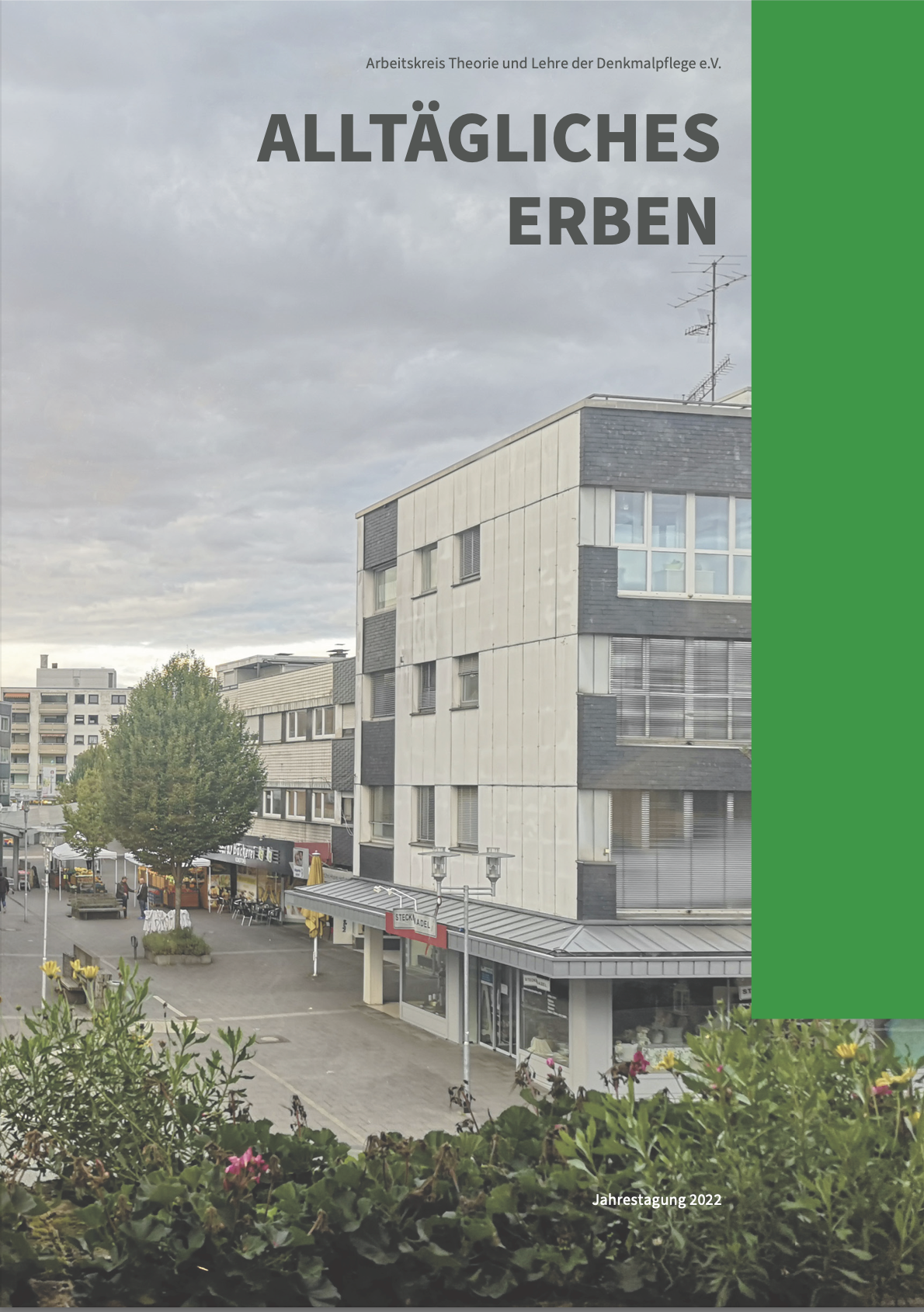
Rehm, Robin, and Silke Langenberg. 2023. “Farben des Alltags: Großsiedlungen und öffentliche Bauten um 1970.” In Alltägliches Erben, edited by Eva von Engelberg-Dočkal, Svenja Hönig, and Stephanie Herold, 74–81. Veröffentlichungen des Arbeitskreises Theorie und Lehre der Denkmalpflege e.V. 32. Heidelberg: arthistoricum.net-ART-Books. https://doi.org/10.11588/arthistoricum.1254.c17551.
At the beginning of the 1960s, a restructuring of public building tasks took place in the Federal Re- public of Germany. The destruction of cities during the Second World War likewise prompted an ex- amination of building stock along with population development and economic growth. Large housing estates were created, as were buildings for social institutions, educational facilities, administrative buildings and so on; their planning was largely carried out by the building departments at the munici- pal and state levels, and in some instances – for example when it came to cross-regional projects – also at the federal level.
The color schemes of buildings were associated with special functions in all construction projects. Urban planning considerations were considered important, such as concentration and densification in the city center, creation of groups or ensembles of buildings; enhancement of plasticity and optical reduction of building volumes. But beyond this, the functional, social and psychological implications of color were also explored and exploited through wayfinding systems, decorations that appeal to the emotions, and the moods that result from them. From a sociological point of view, therefore, it is not just a matter of identification by means of color; rather, it is the potential associated with color that is interesting. In the contemplation of colored architecture, the subject experiences itself and is prompted in turn to reflect on its position within society. By means of this dialectic of private and pub- lic, each person – it is hoped – is granted insights into social relations and the possibility of individual self-realization.